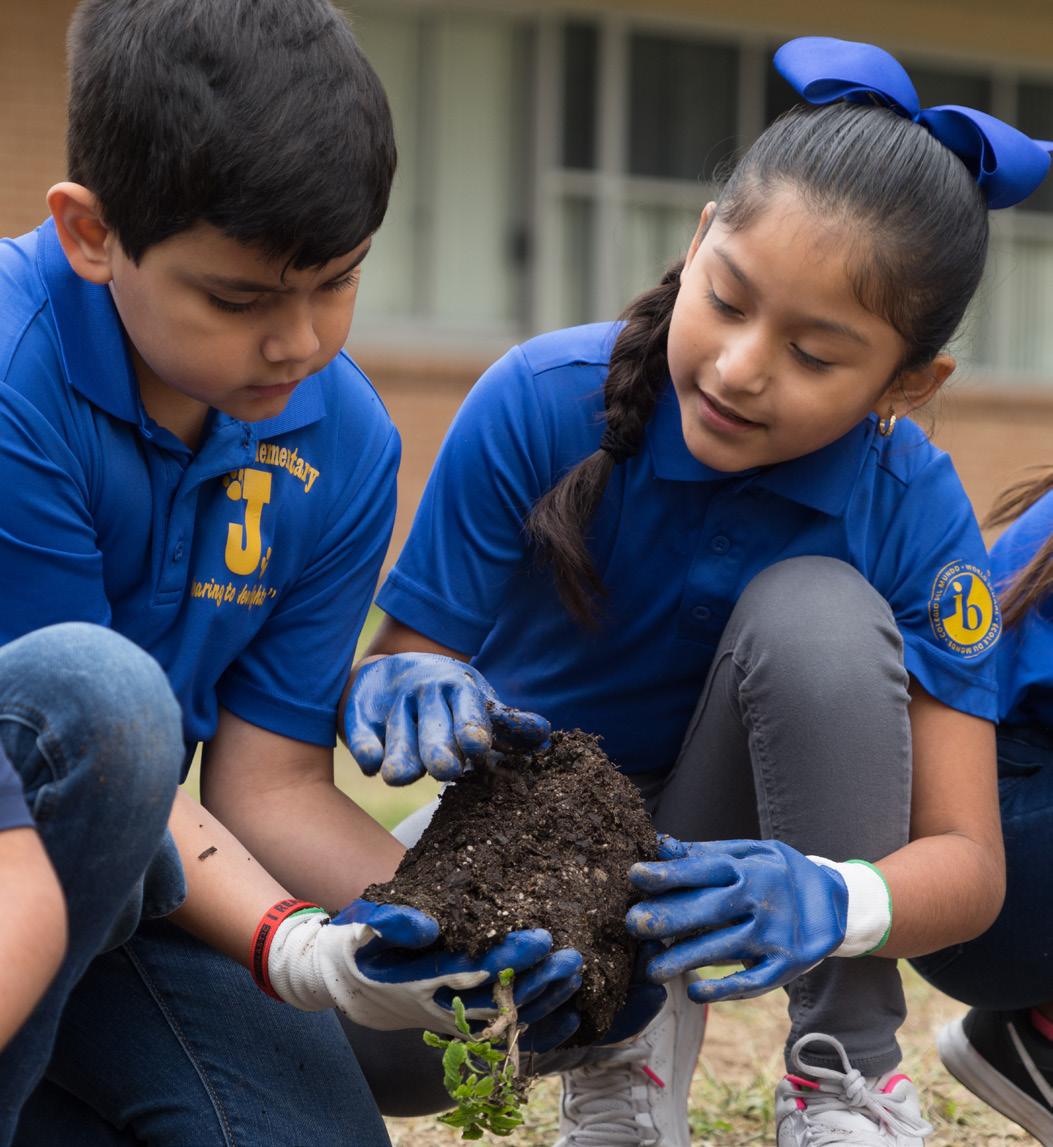
2 minute read
City of McAllen Takes Monarch Butterfly Pledge
Quinta
MAZATLAN
City of McAllen Takes Monarch Butterfly Pledge
By Quinta Mazatlán-Center for Urban Ecology
For the monarch butterfly, life starts small. They hatch from an egg the size of a pencil tip, grow through five instars as a caterpillar, change drastically as a chrysalis, and emerge and roam as an adult. Throughout their lives they make incremental changes – shed skin here, eat differently there, change flight direction – that cumulatively result in one of the most impressive and renowned lifetime migrations of any animal in the world.
Making sure that future generations are able to experience monarch migration also takes incremental changes that, when added together, contribute to the conservation of a species.
The City of McAllen has committed to the Mayors’ Monarch Pledge, a National Wildlife Federation project dedicated to creating habitat for the monarch butterfly and raising awareness of the perils the iconic species is facing, to make those incremental changes.
Over the past 3 decades, monarch populations have declined in North American by 90% and 99% in the eastern and western parts of their range, respectively. The declines are thought to be caused by a combination of factors, including loss of the native nectar plants that fuel their annual migration and milkweeds, the butterflies’ host plant for reproduction. Additional causes for concern for monarchs are climate change, pesticides, and parasites.
The City of McAllen was the first Lower Rio Grande Valley city to sign up for the Mayors’ Monarch Pledge Leadership Circle, which means accomplishing at least 8 action items that contribute to monarch conservation. These action items include engaging with the community through outreach and creating habitats that will support monarchs and other pollinators.
An example of one action already being taken is the creation of butterfly gardens at McAllen Independent School District elementary schools. Led by Quinta Mazatlán, the schools are guided through the process of creating a butterfly garden – from site preparation to establishing the plants – and supplied with native plants from the US Fish & Wildlife Service. These gardens not only create habitat for monarchs and other butterflies but also serve as an outdoor learning experience for school kids to learn about science and nature.
Quinta Mazatlán has also planted hundreds of native nectar plants and milkweeds in their urban sanctuary in McAllen. John Brush, Urban Ecologist for the City of McAllen, said the efforts have already made a difference in the park. “We see Monarch caterpillars on our milkweeds almost every spring now. We also have documented over 90 other butterfly species and a number of native bees using our gardens and forest.”
For the monarch, starting small does not stop it from making its magnificent journey. We can take encouragement from the monarch, knowing that every milkweed, nectar plant, and garden does make a difference.


















